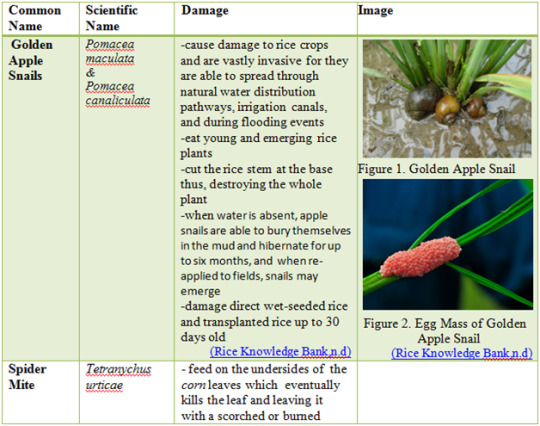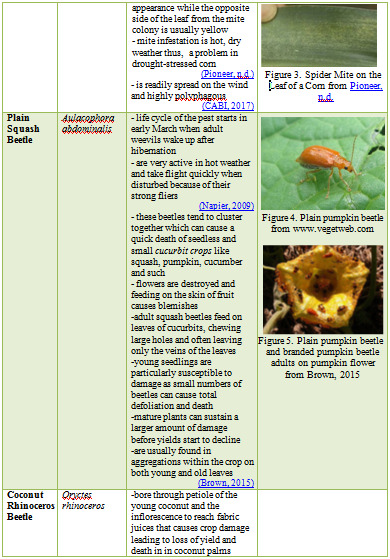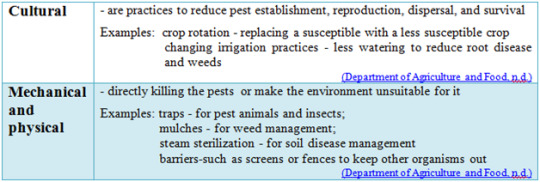#pasture leafhopper
Text
filter | Definition, Cases, & Control
weed, general term for just about any plant growing wherever it is not necessarily wanted. From the time individuals first attempted typically the cultivation of plants, they have had to fight the intrusion by weeds in to areas chosen with regard to crops. Some unnecessary plants later have been found to have virtues not formerly suspected and so were taken off the category of weeds and taken below cultivation. Other cultivated plants, when transplanted to new weather, escaped cultivation to become weeds or intrusive species. The group of weeds as a result is ever altering, and the term is a relative one.
Weeds conflict with various human activities, and many methods have been developed to suppress or eliminate them. These types of methods vary with the nature of the particular weed itself, typically the means at palm for disposal, and the relation from the method to the environment. Usually intended for financial and environmental reasons, methods utilized on a the game of golf or perhaps a public playground cannot be applied on rangeland or even in the woods. Herbicide chemicals dispersed on a highway to reduce unsightly weeds that constitute a new fire or site visitors hazard aren't correct for use in cropland. Mulching, which is often used to suppress weeds in a residence garden, is not possible on large farms. Weed control, throughout any event, has become a very specialized activity. Colleges and agricultural colleges teach courses within weed control, and industry provides typically the necessary technology. Inside agriculture, weed management is essential for maintaining high levels regarding crop production.
The particular many reasons with regard to controlling weeds turn into more complex along with the increasing advancement technology. Plants come to be weeds as the function of time and place. High weeds on roadsides presumably were not necessarily problematic prior to be able to the invention in the automobile. However, using cars and more and more drivers on highways, tall weeds became dangerous, potentially obscuring drivers? visibility, particularly at intersections. Sharp-edged grasses are moderate nuisances in some sort of cow pasture; whenever the area is converted to some sort of golf course or perhaps a public recreation area, they become a proper nuisance. Poison pine (Toxicodendron diversilobum) is pretty a pleasant shrub over a sunny hillside on view country; throughout a camp surface it is a definite health threat. Such examples can be given fortsat to cover every single aspect of farming, forestry, highway, water and public land management, arboretum, area and golf-course attention, and home scenery maintenance.
Weeds take on crop plants regarding water, light, plus nutrients. Weeds involving rangelands and pastures may be nasty, unpleasant to animals, or even even poisonous; that they may cause injuries, as with accommodations of foxtails (Alopecurus species) in horses? mouths; they may lower values regarding animal products, since in the situations of cockleburs (Xanthium species) in constructed from wool; they may add to the burden of animal care, while when horses graze in sticky tarweeds (Madia species). Several weeds are offers of plant disorder organisms. Examples will be prickly lettuce (Lactuca scariola) and sow thistle (Sonchus species) that serve as hosts for dainty mildew; wild mustards (Brassica species) that will host clubroot associated with cabbage; and saltbrush (Atriplex species) and Russian thistle, within which curly top virus overwinters, in order to be carried to be able to sugar beets simply by leafhoppers. Many weeds are hosts involving insect pests, in addition to a number are invasive species.
where to order weed online canada began any time humans first ripped weeds off their food crops and tried to grow solitary plant species, free from all plant opposition. That was the start of monoculture, a method that since has come to dominate farming. Contrary to the principles of ecology, farmers throughout the world increase the major food, fibre, and affectation crops in a new monoculture because expertise indicates that the highly improved modern crop species provide their highest yield under this method.
Through hand pulling, individuals devised simple equipment such as the spud, the cutlery, and the hoe to eliminate weeds. For hundreds of years, from the particular Egyptian culture to be able to the Renaissance, individuals simple methods have been used. The initial efforts to turn away from basic hand methods in addition to mechanize the difficult task of marijuana control began within 17th-century England. Ever since then there has already been continuous improvement regarding agricultural tools applied to destroy weeds and of cultural methods employed in order to minimize weed development. The principal advantage of cultivation associated with row crops is the control of weeds. Any method associated with weed control that will minimizes tillage tends to conserve ground structure and keep fertility.
In improvement to tillage, some other mechanical methods regarding weed control include burning, grazing, and even the utilization of geese or geese inside certain crops (in cotton and mint especially). All associated with those methods include drawbacks: you will find the difficult, painful nature regarding hand weeding; the particular repetitious and quite often dangerous nature of clean tillage with machinery; typically the slow, fuel-consuming characteristics of burning; along with the costly requirement of livestock or chicken to the biological grazing methods. Tillage, nonetheless one of the most widely utilized method of row-crop weed control, have been greatly improved simply by development of precision seeding and close up preadjustment of tiller tools, allowing typically the passage of bud knives within a good inch or less of the young crop plants. Inspite of these improvements it really is known that bud knives injure crop roots, especially overdue in the tillage season. Additionally, tillage tools can distribute perennial weeds quickly, introducing rapid invasion of whole job areas.
Chemical control
Chemical weed control (see herbicide) has recently been used for a long time: sea salt, business by-products, and herbal oils were first utilized. Selective control associated with broad-leaved weeds within fields of food crops was uncovered in France back in the 1800s, and this kind of practice soon distribute throughout Europe. Sulfates and nitrates associated with copper and straightener were used; sulfuric acid proved also more effective. App was by bringing out. Soon sodium arsenite became popular the two as a bottle of spray so that as a garden soil sterilant. On hundreds and hundreds of miles associated with railroad right-of-way, plus in sugarcane in addition to rubber plantations inside the tropics, the dangerous material was employed in tremendous amounts, often resulting within the poisoning associated with animals and occasionally people. Diesel oil, because a general herbicide, and sodium dinitrocresylate (Sinox), as a selective plant great, were introduced during the first a few decades of typically the 20th century.
Organic control
Efforts to eradicate weeds by means of biological control will be a fairly recent development. A beginning statement from 1902 explained the importation regarding insects from Mexico to Hawaii in an effort to be able to control Lantana, a great imported shrubby rising weed that experienced spread over a huge number of acres of pastureland, rendering them pointless for grazing. Prickly pear cacti are actually very effectively handled in Australia; a few 24 million hectares (60 million acres) are already converted by cactus thicket in order to plowland and meadow by cactus moth (Cactoblastis cactorum), which often was introduced through Argentina in 1925. By 1933 the particular major cactus regions were under manage.
#online canadian dispensary#where to order weed online canada#canadian weed online#canada cannabis online#bc online dispensary#weed delivery Canada
1 note
·
View note
Text
“Wreck Them Up: Pests Control” by Milvie R. Famor
Philippines is an agricultural country, for most of the citizens are dependent to their agricultural income. However, farmers, gardeners, or even agriculturists in the country are always challenge by the threat of pests and on how to control these pests that are present in agricultural lands. To respond to these problems, they usually use chemical synthetic pesticides that are made available in the market though, for all we know such pesticides have undesirable effects to the environment specifically to the other organisms, and to the soil where the plants are being planted. For this article, it aims to present some pests present in the country, including different ways of controlling pests that are present in farmland, and evaluate the effects of synthetic pesticides to the environment.
PEST
Pest is everything, anything, or anyone that are unwanted and attacks, endangers, or damages the crops, livestock, food, people and others. In this paper it focuses on the agricultural pests that are a threat and are economically important for most of them reduce the yield of farmers. Table 1 shows some of the pests that are present in the Philippines.
Table 1. Some of the Pests in the Philippines



CONTROLS
Aside from the use of chemical pesticides there are other ways to control and exterminate pests that can or are present in any farmlands. Table 2. presents ways of controlling and preventing pest and the advantages and disadvantages on using such way.
Table 2. Ways on Preventing and Controlling Pests


In the Philippines, two of the most commonly used pesticides are Bushwhack and Malathion. Bushwhack is a pesticide classified as a pyrethroid with the generic name of cypermethrin. It is used as a chemical control as shown in Table 3 while Table 4 indicates the active ingredients of Bushwhack that are toxic and can harm the health of other organisms.
Table 3. Pests killed by Bushwhack on different host

Table 4. Active Ingredients of Bushwhack

On the other hand, Malathion, it is an organophosphate insecticide that is commonly used by farmers. It is used to control, mites aphids, scale, leafhoppers, flies, leafminer, loopers, thrips, pear psylla, spittlebugs, mealybugs, corn earworms, chinchbugs, armyworms, grasshoppers, bollweevils, lice, ticks, bollworms, spiders, ants, and mosquitoes. It is applied to clover, alfalfa, pasture and nonagricultural land, range grasses, cereal crops, safflower, cotton, soybeans, corn, beans, sugar beets, blueberries, inside homes, and stored grain.
Table 5. Properties of Malathion

CHEMICAL PESTICIDES AND ITS EFFECTS
However, the use of chemical pesticides brings not only positive benefits but also hazards to the environment especially to humans. There have been a lot of dangers experienced by humans due to exposure of pesticides such as physical irritation and damage, headaches, dizziness, nausea, fatigue, systemic poisoning, or even chronic diseases like cancer, reproductive harm, and endocrine disruption.
A study conducted by the researchers in 2007 at the Public Health Institute, the California Department of Health Services, and the UC Berkeley School of Public Health showed that women exposed to organochlorine pesticides could cause a risk factor for autism spectrum disorders (ASD) to their children.
In the study of Brouwer et al. (1999), it was revealed that polychlorinated biphenyl (PCB) causes developmental defects such as retarded growth, neurobehavioral effects, immune effects, chloracne, and teeth and nail deformities when a human infant has been exposed to PCB.
All of these happen for there are several entries in the body that the pesticides can enter. It can be through oral entry, where the pesticides enter through the mouth by the food or liquid an organism intake. Respiratory entry is very common by breathing the pesticides vapour, powder, or sprays through the mouth of nose. Also, dermal entry can happen through absorption through the skin, eyes, forearms, and forehead.
Aside from the destructive effects of pesticides to humans it also contaminates the soil, air, water, which endangers animals, plants, and aquatic life. Application of pesticides hinder nitrogen fixation, cause residues on food products, decrease biodiversity of soil, or changes in physiology and behaviour of other organism.
Conclusion
Yes, pests should be prevented and controlled as they greatly endanger the income of farmers for these pests are attacking and preventing an abundant harvest. Yes, there are a lot of ways to control pests that are possible to make and are made available but controversially it is always the chemical controls that are always questioned. Yes, chemical controls can harm the environment and the other organisms especially the humankind due to its toxic ingredients that can cause irritation and even death to some. Yes, biological control can be done but the risk of having invasive species and unbalanced ecosystem is lurking in the corner. Yes, other controls are there but these are not enough to wipe out an entire pest population. Yes, it is still a question on how to objectively control pests. However, the real answer on controlling the pests in your farmlands is your discretion on how you rightfully manage your choice of control or prevention for you are responsible into maintaining your land and promoting sustainable farming to have a safer environment on which you can earn and can offer to the future generations.
2 notes
·
View notes
Text
Leafhoppers associated with mixed tall fescue pastures in Missouri (Homoptera: Cicadellidae)
http://dlvr.it/PprFWJ
0 notes